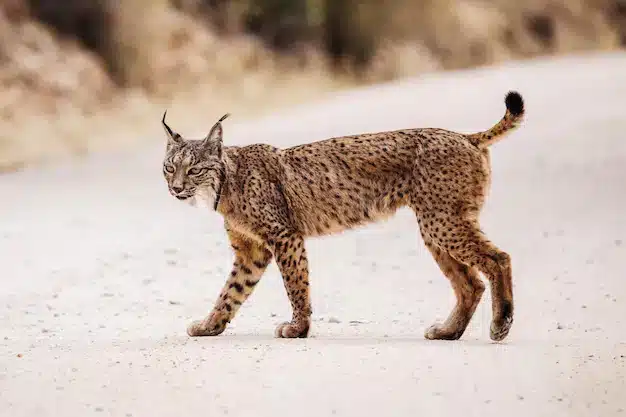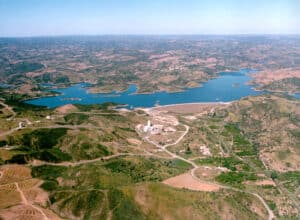A new monitoring system for Iberian lynxes is being developed by the ICNF, aiming to alert drivers of the animals’ presence and prevent accidents.
In a statement to mark World Wildlife Day, celebrated today, March 3, the Institute for the Conservation of Nature and Forests (ICNF) states that the spatial monitoring of Iberian lynxes is about to enter a “new level of sophistication”.
The project is being developed in partnership with the Infraestruturas de Portugal and Waze, which manages an application for mobile devices based on GPS navigation.
The three entities are working on a tracking system that will notify Waze users of the presence of endangered felines near different roads. “For now, the system is being tested on national roads (EN) 122, 123 and on the complementary route (IC) 27 [in the Alentejo and the Algarve]. The alerts are triggered as soon as the animals enter 200 metres-wide virtual territory areas, adjacent and on both sides of the road”, says the ICNF.
The Institute adds that the expectation is that this new technology “will offer a greater degree of protection for Iberian lynxes from the risk of being run over”. However, “the collaboration of motorists” is always necessary.

“Taking into account that road collisions are the main cause of unnatural mortality for lynxes and that these occurrences can also pose a danger to drivers, it is expected that this technology can play a decisive role in reducing these accidents”, argues the ICNF.
The Institute goes on to explain that “the communication process uses a device based on LoRa network technology: radio frequency for long-distance communication, with minimal energy consumption” and that it is the interconnection with sensors present in the tracking collars of the felines that will allow to locate them.
This monitoring system will be “more sophisticated” and “more rigorous”, with “data transmitted almost in real-time”, says the ICNF, adding that the initiative is part of the LIFE Lynxconnect project. This project aims to “increase the population of Iberian lynx and reinforce connectivity between the subpopulations of Portugal and Spain”.
The ICNF utilizes a variety of technologies and systems, such as photo-trapping machines, bioacoustic monitoring devices, and data processing systems, in their conservation efforts.
Lusa


























